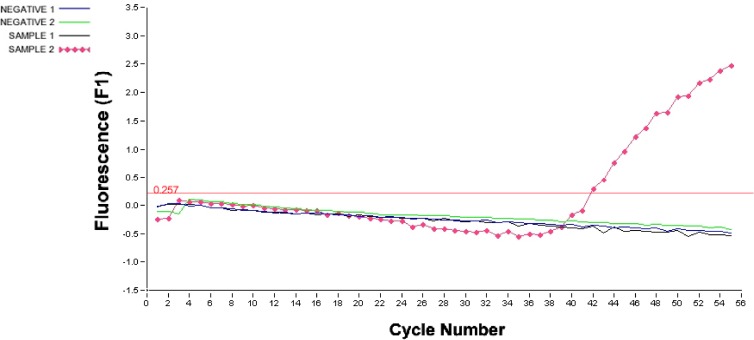Fig 2.
Results of a real-time PCR used to detect the presence of O. tsutsugamushi in the patient's blood. The total nucleic acids were extracted from the whole-blood sample (200 μl) and the serum sample (200 μl) with the QIAamp DNA minikit (Qiagen) according to manufacturer's instructions. The samples were then tested with an in-house-developed real-time PCR assay targeting the gene encoding the 56-kDa antigen of O. tsutsugamushi. Shown is the fluorescence profile (relative fluorescence units plotted against cycle numbers) representing positive detection of the O. tsutsugamushi 56-kDa antigen gene in a whole blood sample (sample 2). A serum sample (sample 1) was negative. Negative 1 is the negative control for the serum sample (sample 1), and negative 2 is the negative control for the blood sample (sample 2). The threshold line is shown in red, and the amplification threshold value of 0.257 is indicated.

